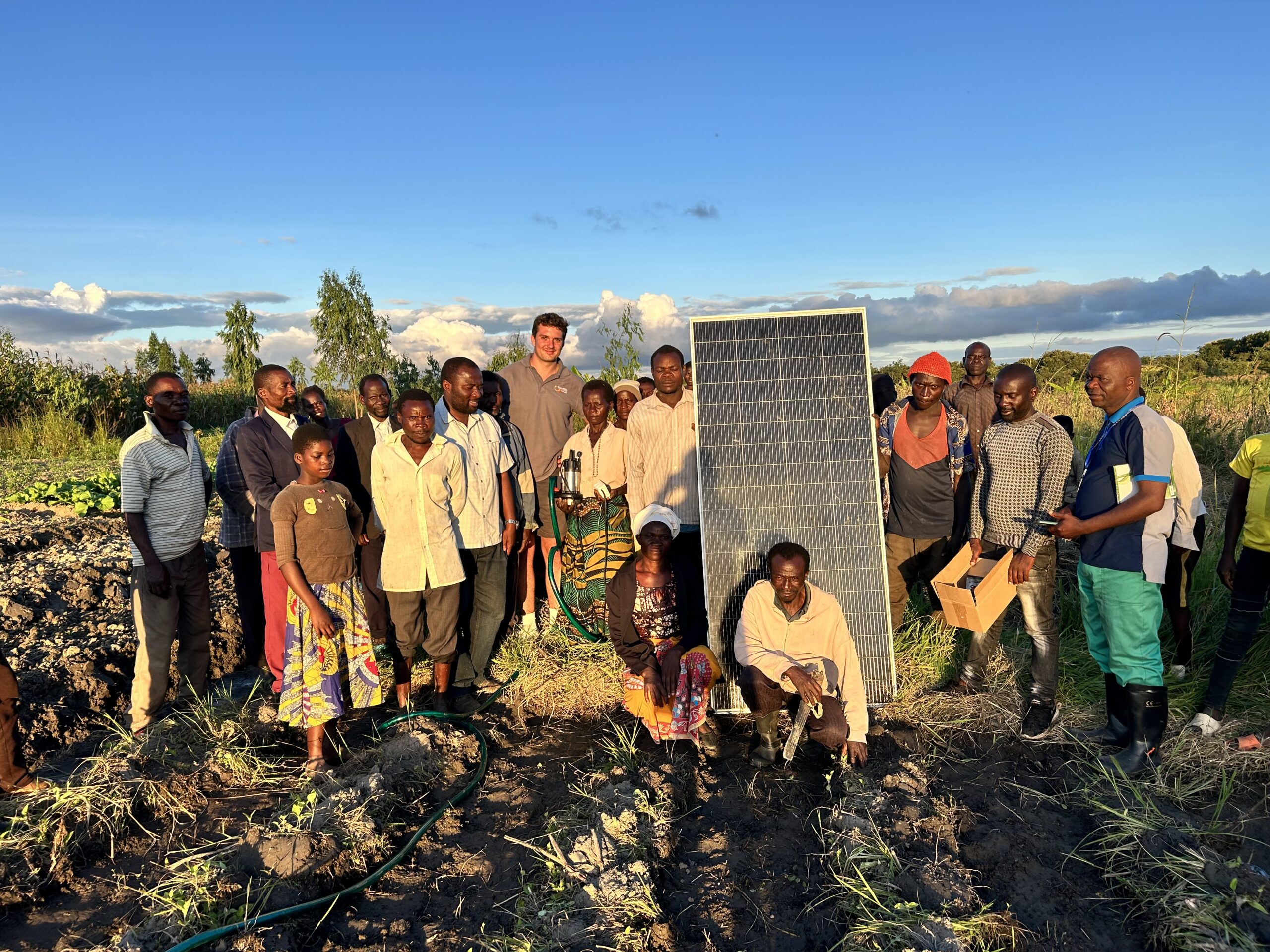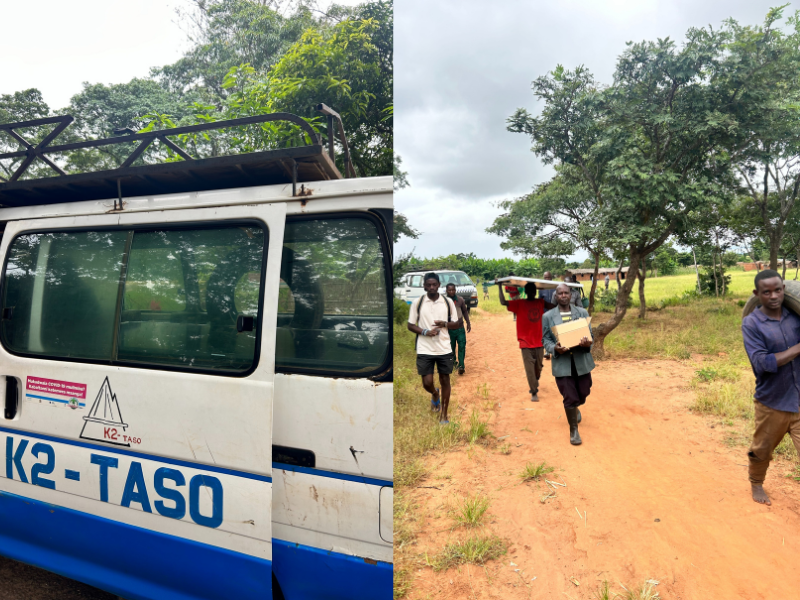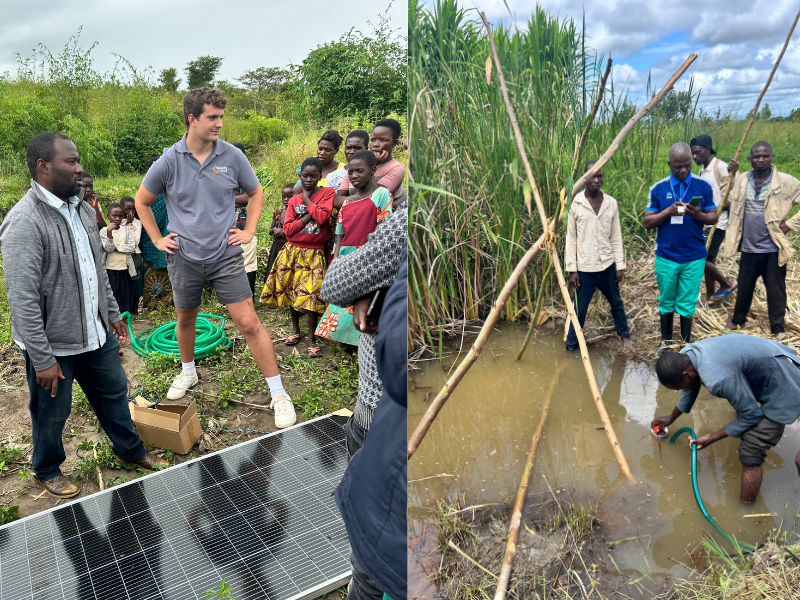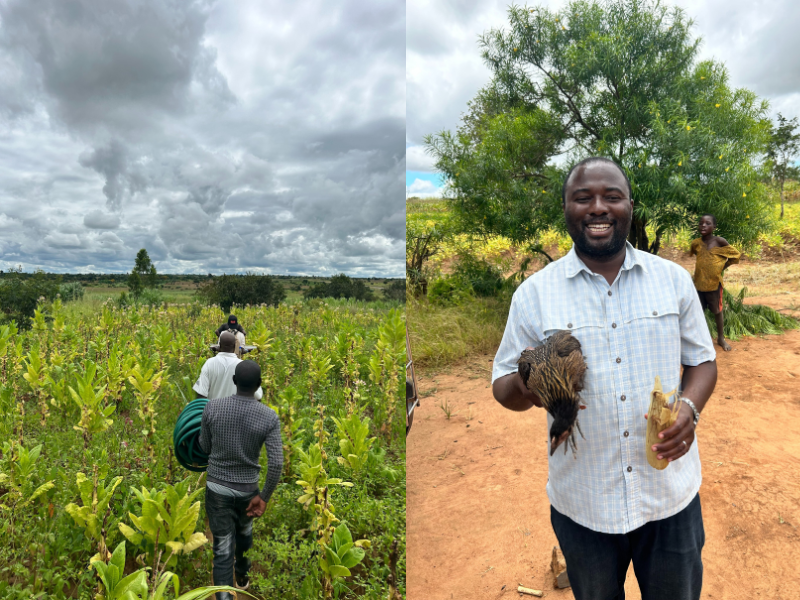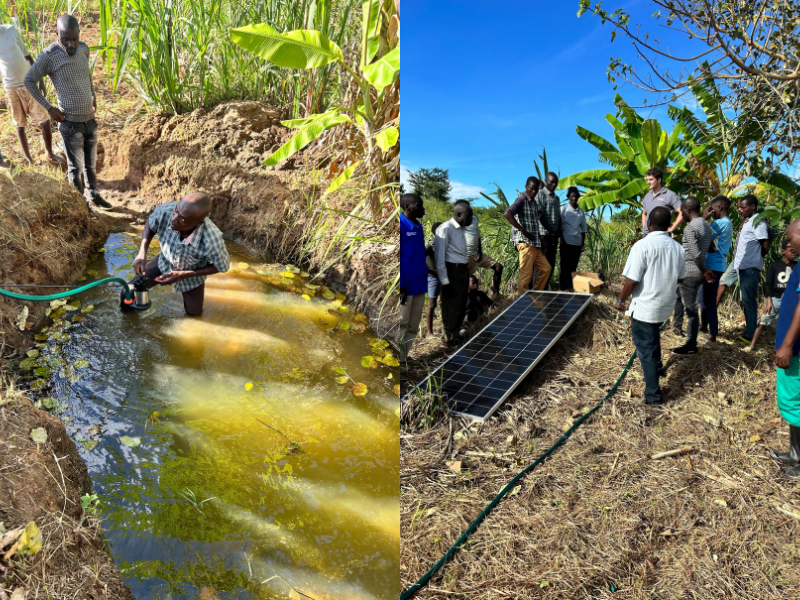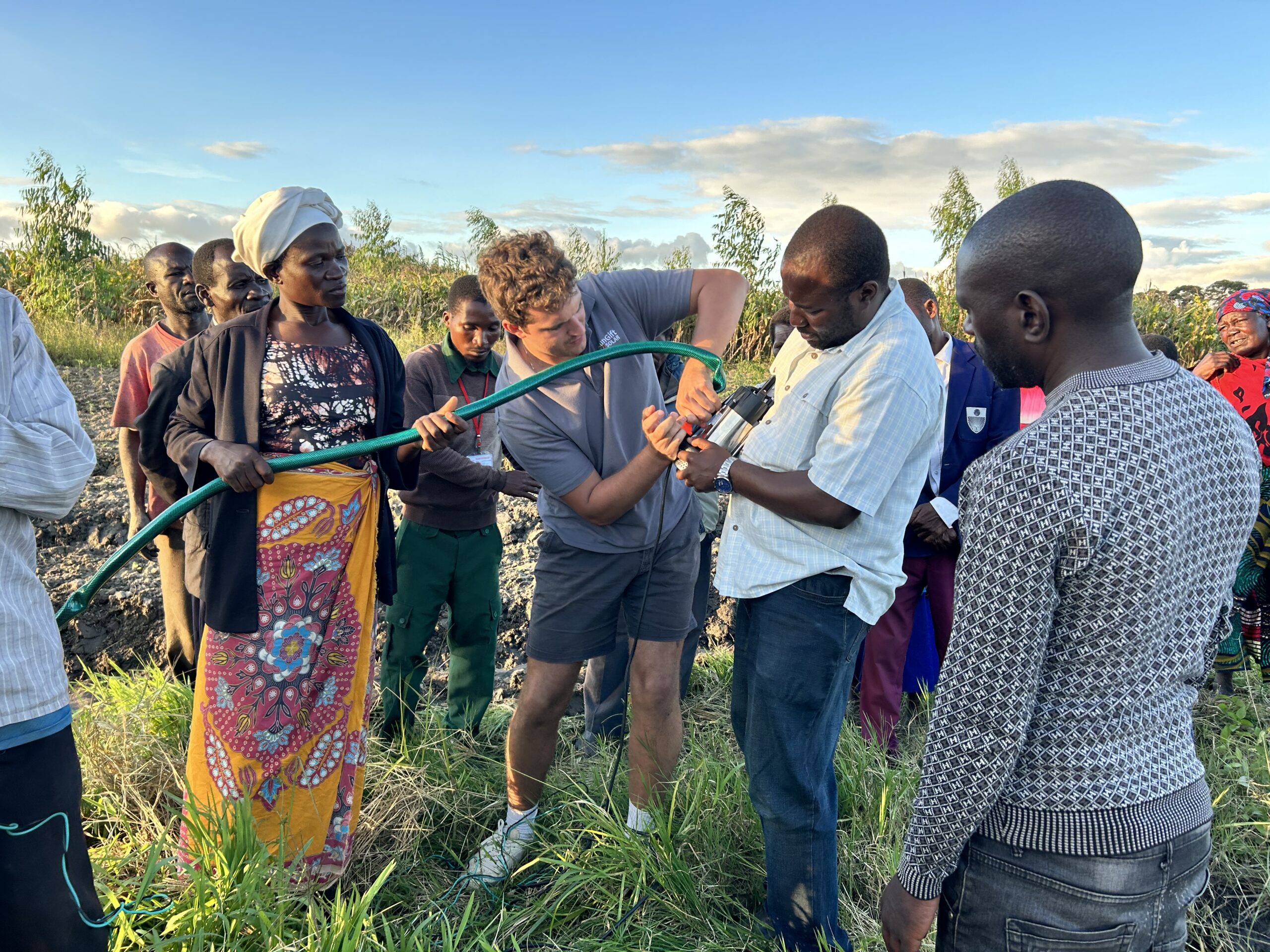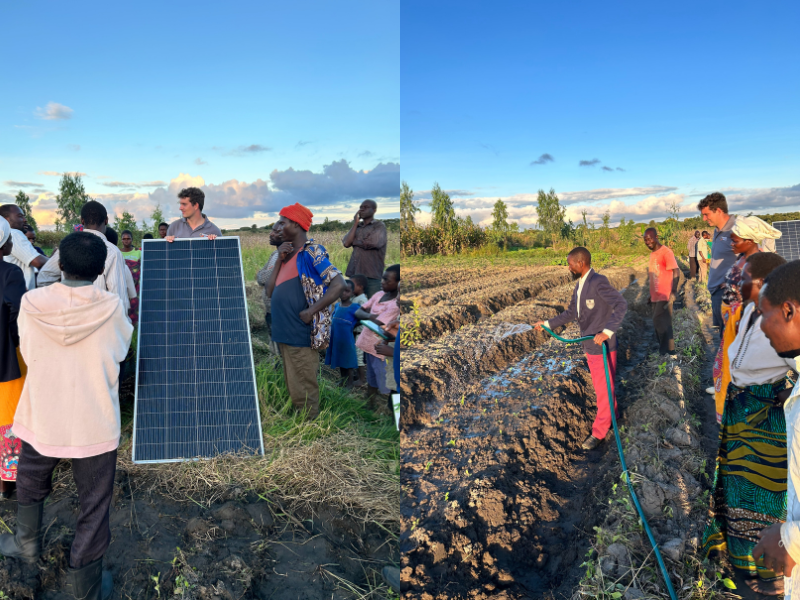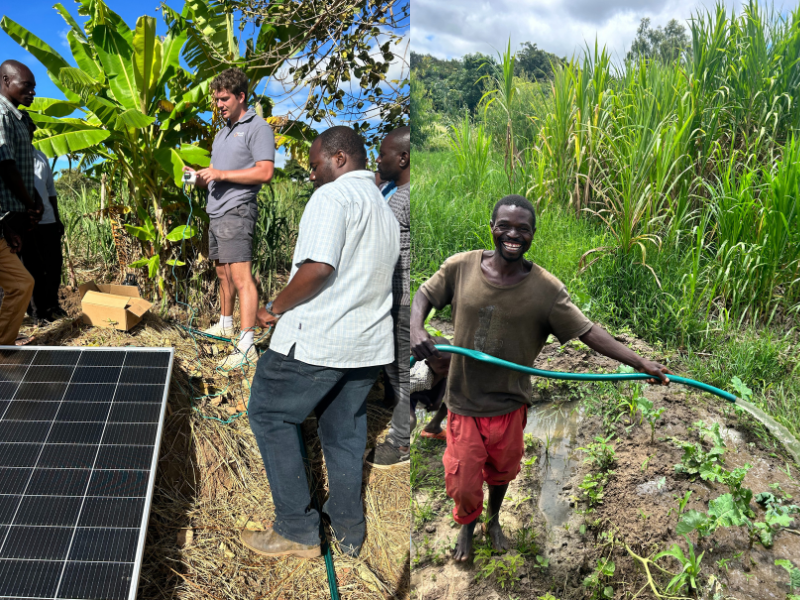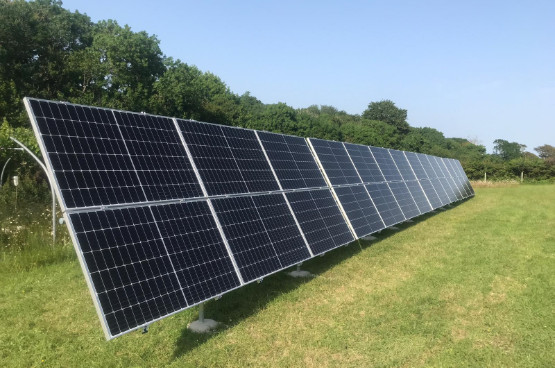At SunGift, we sponsor several local initiatives, and we are particularly excited to spotlight the incredible work of Cameron, who had the idea of fundraising solar water pumps to benefit farming communities in Malawi during the dry seasons. We take pride in sponsoring this impactful project and are delighted to support our employees in their community efforts. Despite some initial Wi-Fi challenges communicating with Cameron, we were able to connect with Cameron, who has shared the following update with us:
Spring 2023, I am sat in my Loughborough University seminar room listening to a guest lecturer, Robert Van Buskirk, discussing the benefits of renewable energy in the Global South. It was here I began to ponder the scalability of solar projects across Malawi, more specifically targeted towards solar water pumps for irrigation. For those of you that are unaware, Malawi’s economy is largely based on subsistence farming whereby families cultivate maize, tobacco and soy in small plots, between the rainy months of November to March. What I realised was that between March and November people struggled to grow crops such as vegetables due to a lack of rain. However, water could be found in copious boreholes scattered around plots across Malawi. The issue, how to get this water onto fields? Malawi has issues with electricity supply and in rural villages this is even scarcer, so this was not an option. Diesel powered pumps are expensive to purchase and run, not to mention the occasional fuel crisis to compound this. The option solar water pumps! Relatively cheap to purchase, inexpensive to maintain and in a country with copious amounts of daylight hours there wasn’t a better solution!
With a little bit of networking I found a supplier in Blantyre in the south of Malawi, so named for its less than sunny Scottish counterpart. The problem, it was a 12hr drive south of where I was staying… However, the school I was volunteering at had a sports trip there at the end of January so I felt this was the ideal opportunity. I had managed to source around £1500 from SunGift Solar in Exeter and some crowd funding from friends and family. With this, I managed to purchase 6 solar pumps, 7 panels and 100m of one inch hose pipe. Two of the pumps were a tried and tested 150w pump, three were a new design a bit more powerful at 300w and then finally we had purchased a 500w pump which would connect to two panels in parallel.
After a brief demonstration in Blantyre from two solar engineers called Laurence and Gilbert I was good to go. They had also taken the time to show me around their operation at Solar4Africa. Whereby they elaborated on some of projects they were working on from solar lighting, cooking and even a solar tuk tuk! Which I thought was testament to the immense future that renewables have and the role they can play in developing the global south. I did suggest driving it to Cape Town however this was quickly quashed when I realised it only did 15km before it had to charge up again!
After all this, I packed up the panels into their red electric tuk tuks and headed to my hotel. It’s safe to say waking up next to 7 solar panels in my hotel room was rather unusual… Anyway, I packed them up and threw them in a truck and met the students on the bus where we’d take them back to Kamuzu Academy. Trying to fit 7 solar panels down the middle isle of a bus packed with kids was both unpopular and also rather difficult. Nevertheless, we got all the panels and students back to school safely and packed them away in a shed till I could work out suitable homes for them.
Several weeks later, I finally got around to testing the panels and pumps. It turned out that some of the wiring had gotten loose in transit and so needed mending. However this was an easy fix and once this was done we were back in business. I was made aware of a local charity called K2-TASO who might be helpful in finding communities most in need and who most importantly had access to all year boreholes.
A few days later I heard back from Peter Minjale, the founder of K2-TASO. His charity aims at improving irrigation in the region of Kasungu in Malawi as well as helping support families living with HIV/AIDS. With his help, we found 6 communities to deliver the systems to and set about making a plan.
The following Saturday morning Peter picked me along with the panels up and we headed to our first village Jogo. As we got there we were greeted by swarms of villagers and their chief, along with many children all of which were scared of the white ‘mazungu’ and giggled and ran away when I tried to give them a high five. We walked down to their plot and proceeded to demonstrate how the pump and panels worked, how they should be cared for and ultimately how it would make a difference to their agricultural yield. With many thanks from the families, chief and K2-TASO we were back in the car followed by a procession of song and cheer.
The second village we went to was called Phale, we were greeted again by a group of lovely ladies who sung their gratitude. We then began to walk to the vegetable plot where there was a sizeable borehole. Stupidly, on my way there I tripped and put my foot right in it meaning I had a sopping shoe for the rest of the day which was delightful… Again, we showed them how to operate the pumps and were blessed by the chief and then headed back to the truck. As we did so we were gifted some maize to say thank you and to my surprise a chicken! Unsure what to do with it Peter Minjale took the chicken from me and put her in the back of the van.
We then headed to an individual called Nelson Japani who I had the pleasure of meeting earlier in my travels. He had a small scale tobacco plot and a vegetable garden and had asked me if I would donate a pump to his family. His plot was a little bigger and required the 500w pump along with two panels. Unfortunately the sun had disappeared between the clouds and so there wasn’t enough power coming from the panels to power the pump. However, I made it clear that once the sun came out it wound will perfectly fine.
Our fourth stop was a village called Mphepo. This village had previously been gifted a cow from K2-TASO which had given them access to fresh milk. I was told this had made a huge difference to the village. On route we walked towards their plot, passing a questionable green plant with five leaves not to be named… Once we arrived at the plot we were similarly showed the village how to use the system and proceeded to get a good flow from the pump which instantly began irrigating their vegetable plot. After more singing and praise from the community we left and got back in the van.
On route to our fifth village, Nyambo, we drove past William Kamkwamba’s home village Wimbe. For those of you that don’t know who this is, William is the subject of the critically acclaimed book and subsequent film ‘The Boy Who Harnessed the Wind’. In this film, William builds a wind turbine out of scrap parts, which ultimately supplies drinking water to his village. Following in his footsteps, we got to the village where we headed down to their plot which was lucky to have access to several deep boreholes. Once we had demonstrated the pump and explained it to the families we were kindly offered dinner. However, unfortunately, it was now 4pm and the sun was getting lower and we still had an hour drive to our 6th and final village Chakwanira, so sadly had to turn them down.
Once we arrived in, it was my suggestion that we rush the formalities and introductions and go straight to the demonstration whilst we still had the sun. You can see this in the photos and videos that the panel is at around a 70 degree angle due to how low the sun was. Yet, testimony to the system as soon as the pump touched the borehole we had water spurting out the other end of the hose! As the sun set and the mosquitos began slowly attacking every inch of bare skin on me we explained how the system worked and how they should care for it.
I think it was at this point I began feeling rather emotional and realised just how big an impact we had made to these communities. In each village we had been to there were around 100/200 people in attendance, not to mention all the others in the fields. These systems would allow over 1000 people to have access to irrigation which was previously impossible. Meaning that these communities would be well fed through March to November who would have otherwise struggled to do so.
Global warming is nowhere more felt than the Global South. Just days before I had delivered this project the Malawian government had issued a state of emergency in almost all its regions due to a lack of rainfall in the wet season. Every year this will get worse and groundwater sources will become even more important if these families are going to continue to feed themselves. Projects like this demonstrate the necessity, practicality and scalability of localised renewable energy projects just like this one.
I would like to take this opportunity to thank my beneficiaries such as SunGift Solar as well as my GoFundMe doners, without whom none of this would be possible. I’d also like to thank K2-TASO for your help distributing the panels and whose local knowledge and translation was invaluable.
To my benefactors: Jogo village, Phale village, Nelson Japani, Mphepo village, Nyambo village and Chalwanira village I wish you all the very best of luck and I can’t wait to here how you all are doing.
by Cameron Duncan
For those who would like to donate to future projects or get in touch my email is Cameronduncan2002@outlook.com

 Solar PV Contractor of the Year 2024
Solar PV Contractor of the Year 2024